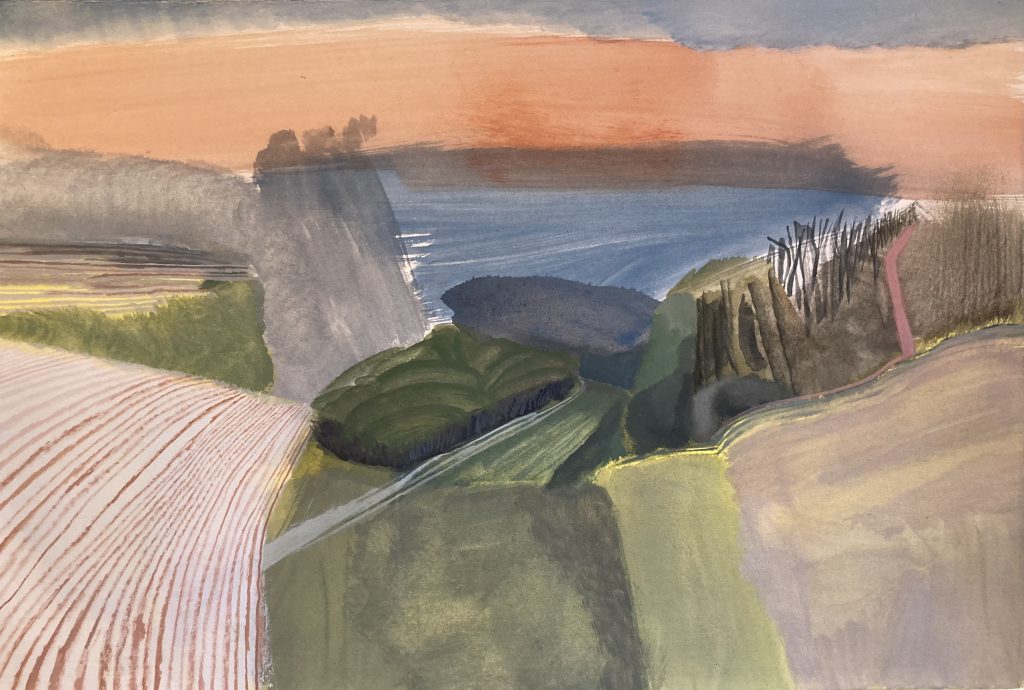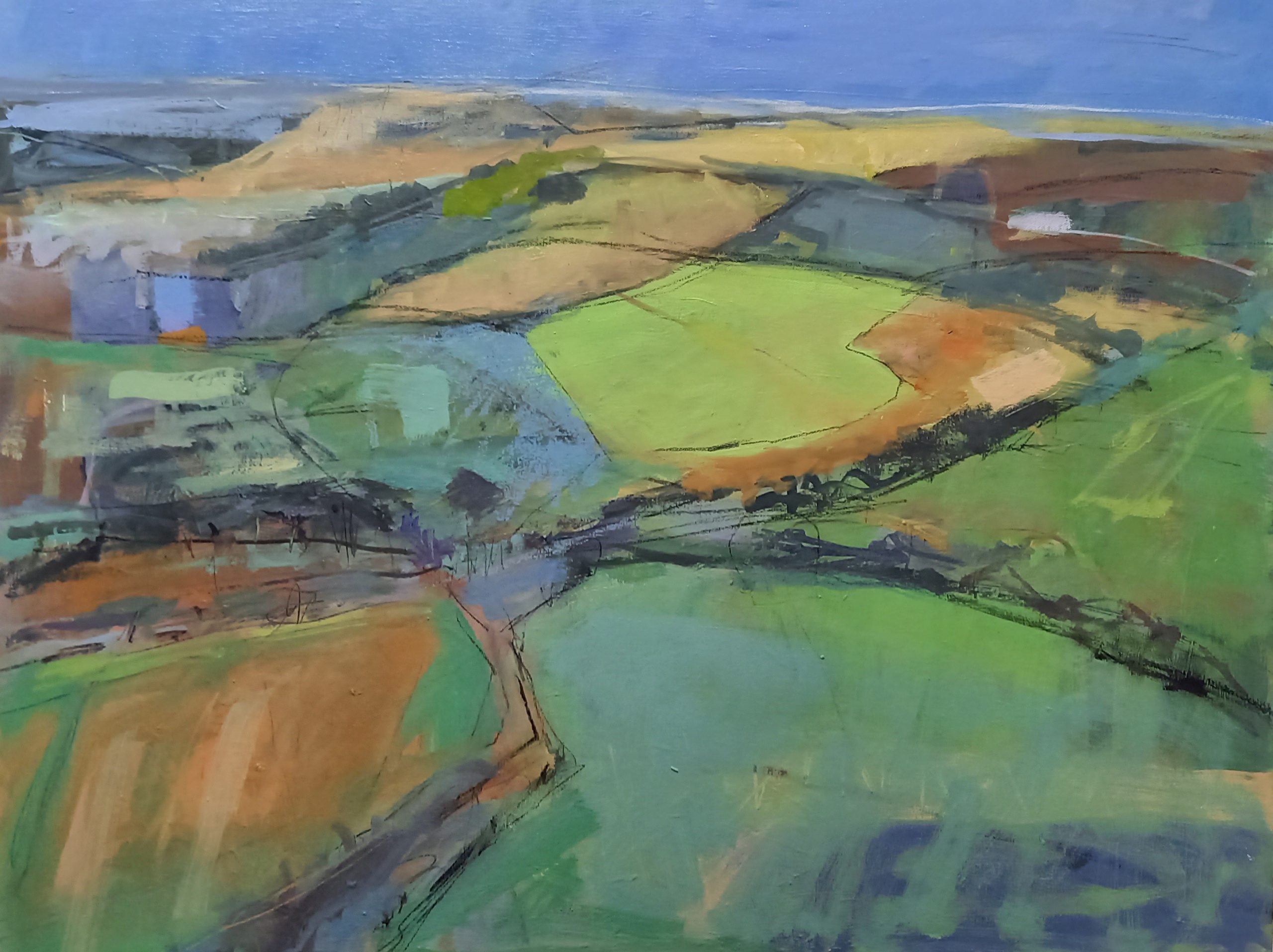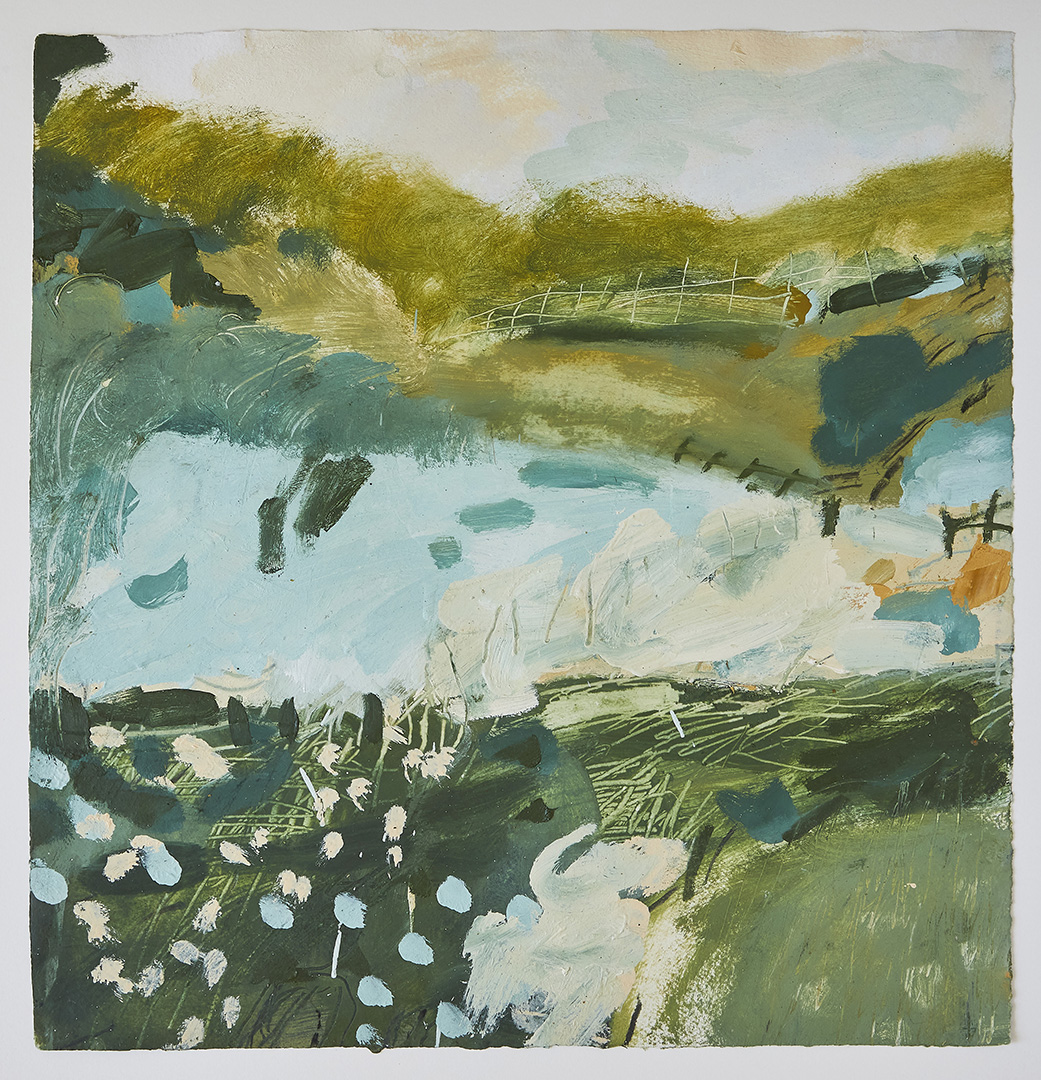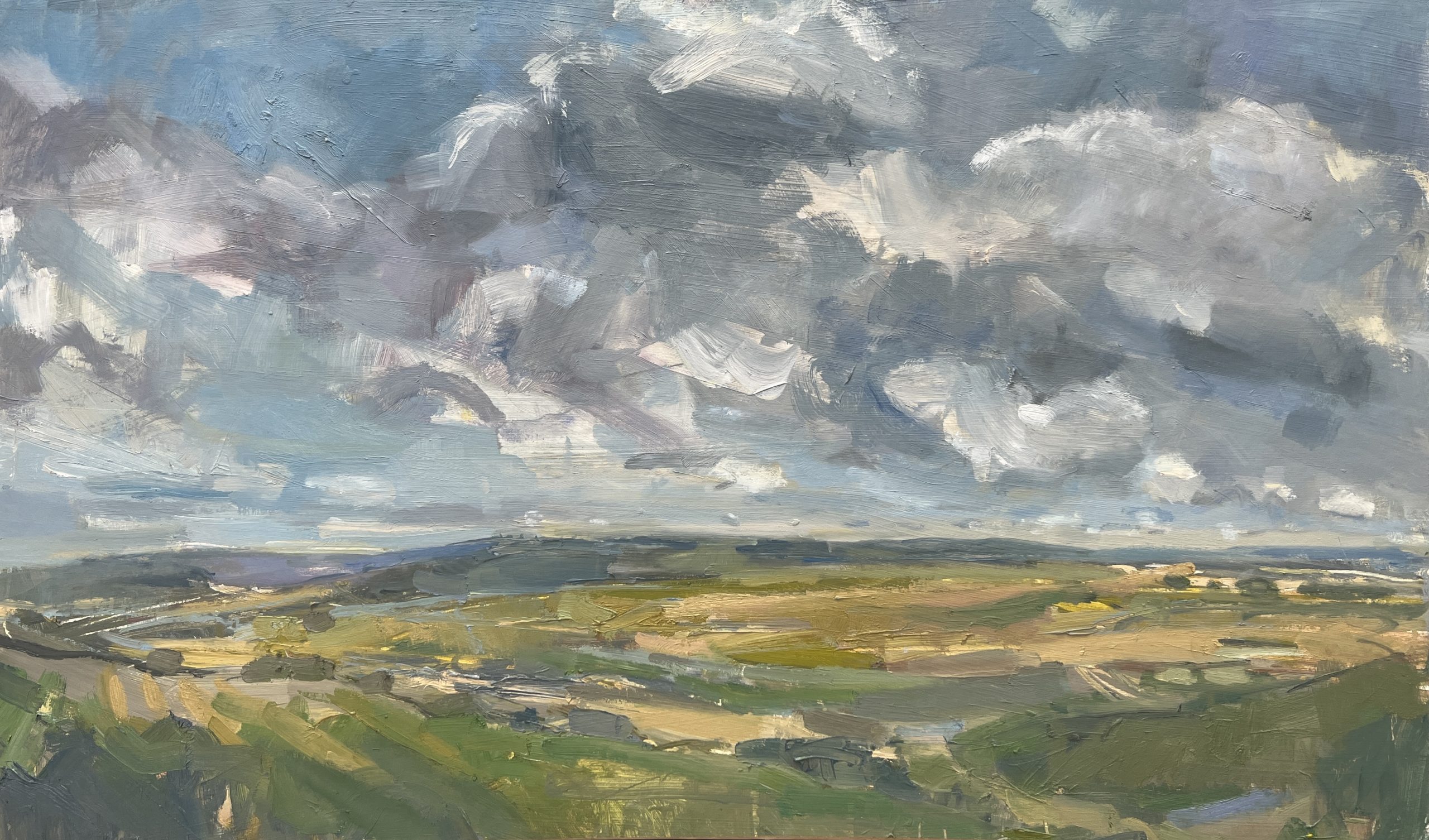We have a number of different landscape artists who approach the subject in varying ways. We focus in on a few here to understand the way in which they approach landscape painting, and why they are drawn to it.
Sketching en plein air is crucial for many landscape artists. Going out and standing in front of the scenery with a sketch book is the starting point for Sarah Warley-Cummings, Rosie Copeland, Sam Rudd and Lucy Marks. For Sarah, “Long walks with a small sketchbook noting the atmosphere and mood of the landscape are the basis for all the work created later in the studio.” Capturing the essence of the place is the mark of a good landscape painting but often the hardest part, so plein air sketching is a good way to distil the most important parts of a scene onto the page, without getting bogged down in the details. Rosie, for example, paints “rapidly in gouache or watercolour, not worrying about too much detail.” Sam Rudd’s sketches are playful and charismatic, reflecting her previous career in illustration, but likewise gather her experience of a place; captivating shapes, the weather, or the atmosphere are suggested and sketched in.
Other artists prefer to paint directly onto the canvas. John Hitchens for example in his sweeping panoramic views set up his ease and painted the work directly on the spot. His View of Duncton Hill from 1971 is a classic example of this approach he cleared a spot on the side of the hill and returned to it again and again. He also returned to the woods around his studio again and again catching their leafy shade and glimpses to the distant Downs. Lucy Marks is also out in all weathers, even deepest winter painting directly onto the canvas.
The Sussex landscape is a particular theme. So rich with pattern and saturated with ancient history, Sarah, Rosie, Lucy and Gabriel Langlands come back to its vistas again and again. Gabriel only recently came to painting full-time, and previously worked on fishing trawlers off the coast of Norway. He finds similarities in the rolling hills of the Downs – with their rising hangers and rippling sheep tracks – with the undulation of the sea’s waves. This distinctly foreign perspective lends his renderings of the local landscape with both a geometrical coolness and a respect for its awe and grandeur.

Gabriel Langlands, Valley and ploughed Fields
For Rosie “Having a home in the heart of the South Downs means that the downland landscapes are a constant source of inspiration. I go for walks with my sketchbooks and paints and love being immersed in the landscape. Here I find that I am inspired to paint the beautiful undulating hills of the Downs, criss-crossed with chalk paths, the blue-mauve colour of the distant hills seen from the steep hangers behind my home.
For Oona Campbell, a Dorset resident, the Sussex skies are one distinct subject in her roster of dramatic skyscapes. She frequently comes back to Sussex as well as the Yorkshire Dales and various locations in Scotland. Wide-open spaces and vast skies characterise her landscapes and focus on the theatrics of the weather. The shifting light of clouds, their ephemeral luminescence or dark, ominous tidings, provoke contemplation and drama in equal measure.
Amy Shuckburgh also allows herself to be guided by drama but in a way that is much more centred on the intimacy of a landscape. She renders colour and movement with energetic mark making in oils or pastels, capturing a landscape’s vibration. “Whether it’s the spaces between trees in a woodland scene, or the angle of headland and shingle on a seascape, or the verticals and perpendiculars in a cityscape, where lamppost, traffic light and rooftop collide, I like to work out how the composition can be carved up into shapes and then animated by my dynamic marks and vivid colours.”
For all, however, their draw to the landscape seems to be instinctive, even a compulsion. While Gabriel dissects the landscape, transforming a complex scene into deceptively simple shapes and strokes, he still finds that, “Loading a brush with colour and laying it across the paper is like magic, as though the colour is coming straight from one’s fingers.”
Amy is compelled to try to grasp the way she feels in a landscape, and says “I’m happiest when I look at a painting and can’t remember how I got there, it has almost painted itself, instinctively, from pure feeling and intuition.”
Sam is also guided by feeling, allowing her work to sit somewhere between representation and abstraction, both the image of a physical place and a depiction of emotion. Rosie captures a fleeting moment, feeling, mood or spirit of a place that she hopes will resonate with the viewer. She says, “I think that a successful landscape is one which captures the emotional essence and inner spirit of a place, not just merely its exact outward appearance. Cezanne famously said, ‘Painting from nature in not copying the object; it is realizing one’s sensations’.”




